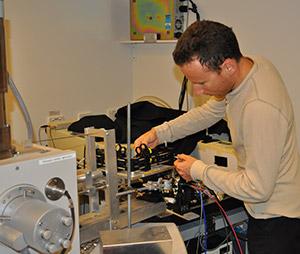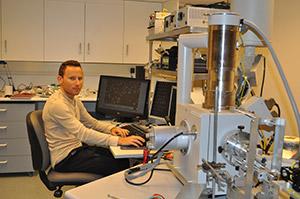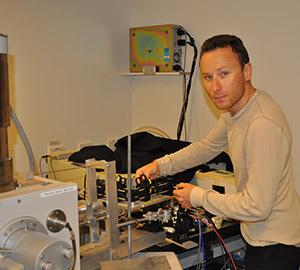


He has already received several international awards including the Discovery Early Career Research Award (DECRA) from the Australian Research Council (2013, relinquished), Harvard Postdoctoral Award for Professional Development (2012), SPIE Research Excellence Award (2010) and Sigma Xi Research Grant (2009).
Dr Aharonovich completed his undergraduate and masters degrees in materials engineering at Technion, Israel Institute of Technology. He then moved to Australian to undertake a PhD in fluorescent nanodiamonds at the University of Melbourne. During his PhD, he developed and engineered novel ultra-bright single photon emitters in diamond based on chromium impurities, an important advancement in photonics and quantum technologies.
In 2011, Igor took up a postdoctoral position at Harvard University working with world renowned optical device guru, Professor Evelyn Hu. Here, he gained a lot of experience working with emerging materials such as gallium nitrite, silicon carbide and diamond, fabricating photonic crystal cavities and optical resonators to manipulate light at the nanoscale.
Now at UTS, Dr Aharonovich’s research will focus on wide bandgap semiconductors and their implementation in nanophotonics and bio-sensing.
Dr Aharonovich explains, “Nano scale materials, such as nanodiamonds, demonstrate unique potential to be used as biosensors. As a biocompatible source made from carbon, nano diamonds are very small and possess ultra-bright photostable emission making them suitable analytical devices with the ability to track biological components in the body.”
“With my research posting at UTS, I am hoping to leverage parts of my PhD and postdoctoral research, by engineering and developing devices from novel materials and using nanodiamonds as bio labels and bio markers,” said Dr Aharonovich.
By using new self-assembling methods, Igor hopes to build highly effective light emitting diodes and nano photonic components from wideband gap semiconductors to achieve enhanced performance for 21st century applications.
“Besides the scientific importance, this multidisciplinary research will be very interesting for the UTS Higher Research Degree students and provide them with excellent topics to explore during their PhD candidature,” he said.

